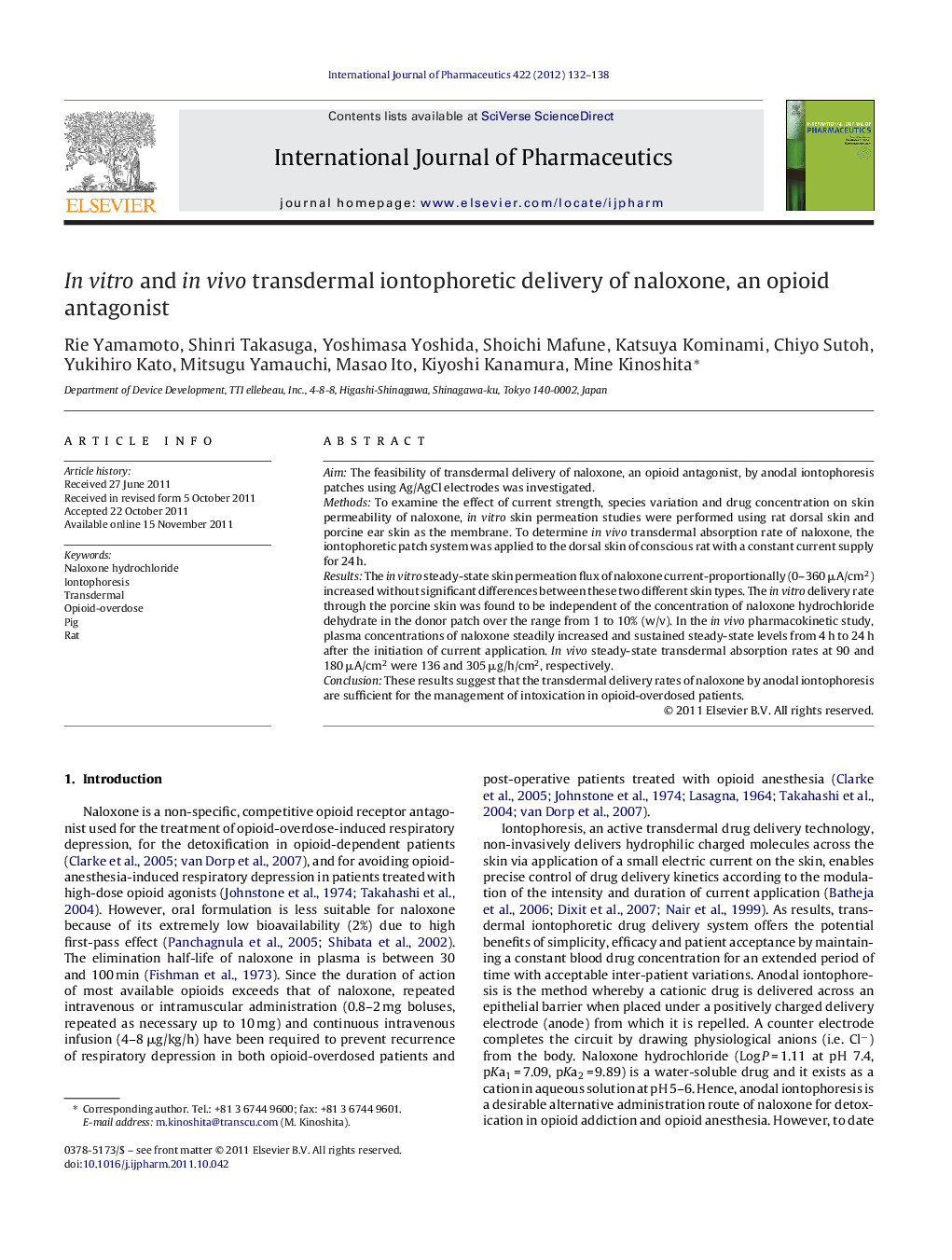| Article ID | Journal | Published Year | Pages | File Type |
|---|---|---|---|---|
| 2503092 | International Journal of Pharmaceutics | 2012 | 7 Pages |
AimThe feasibility of transdermal delivery of naloxone, an opioid antagonist, by anodal iontophoresis patches using Ag/AgCl electrodes was investigated.MethodsTo examine the effect of current strength, species variation and drug concentration on skin permeability of naloxone, in vitro skin permeation studies were performed using rat dorsal skin and porcine ear skin as the membrane. To determine in vivo transdermal absorption rate of naloxone, the iontophoretic patch system was applied to the dorsal skin of conscious rat with a constant current supply for 24 h.ResultsThe in vitro steady-state skin permeation flux of naloxone current-proportionally (0–360 μA/cm2) increased without significant differences between these two different skin types. The in vitro delivery rate through the porcine skin was found to be independent of the concentration of naloxone hydrochloride dehydrate in the donor patch over the range from 1 to 10% (w/v). In the in vivo pharmacokinetic study, plasma concentrations of naloxone steadily increased and sustained steady-state levels from 4 h to 24 h after the initiation of current application. In vivo steady-state transdermal absorption rates at 90 and 180 μA/cm2 were 136 and 305 μg/h/cm2, respectively.ConclusionThese results suggest that the transdermal delivery rates of naloxone by anodal iontophoresis are sufficient for the management of intoxication in opioid-overdosed patients.
Graphical abstractAnodal iontophoresis provides sustainable and current-proportional plasma concentrations of naloxone, a short-acting opioid antagonist.Figure optionsDownload full-size imageDownload as PowerPoint slide
